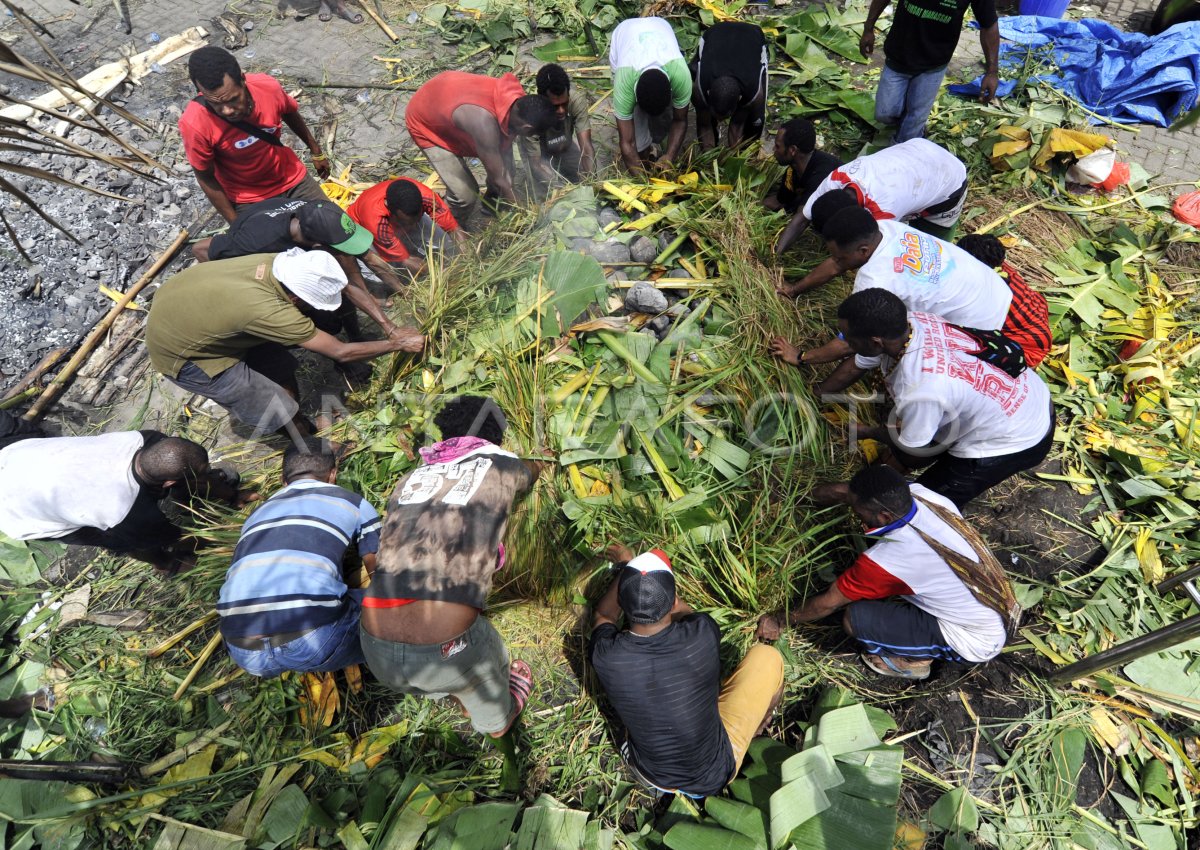Papeda, a traditional sago porridge from the Maluku Islands and coastal regions of Papua, has long been a staple in the diets of indigenous communities. This unique dish, made from sago starch, is not only a source of nutrition but also a symbol of cultural heritage that reflects the deep connection between the people of Papua and their natural environment. As it gains recognition on a global scale, papeda continues to be celebrated for its simplicity, nutritional value, and role in preserving traditional culinary practices.
The Origins and Preparation of Papeda
Papeda is derived from sago, a starchy substance extracted from the trunk of the sago palm tree. The process involves felling the tree, cutting it in half, and scraping out the soft inner pith. This pith is then mixed with water and squeezed to extract the starch, which is subsequently cooked into a glue-like consistency. The result is a dish that is both nutritious and versatile, often served with various accompaniments such as grilled fish, yellow soup, or stir-fried vegetables.
The preparation of papeda is deeply rooted in the traditions of the indigenous peoples of Papua. In regions like Sentani, Taikat, and Manokwari, papeda is a common dish that showcases the resourcefulness of these communities in utilizing local ingredients. The dish is typically eaten with a wooden fork called “gata-gata,” a practice that highlights the cultural significance of communal eating and the importance of traditional tools in daily life.
Variations and Culinary Uses

While papeda is most commonly associated with being served alongside fish, there are several variations that reflect the diversity of regional cuisines. In some areas, it is paired with red snapper, tuna, or even boiled tubers like yams and cassava. Additionally, papeda can be enjoyed with “sayur ganemo,” a side dish made from young melinjo leaves, papaya flowers, and red chilies. These combinations not only enhance the flavor but also showcase the adaptability of this traditional dish.
In certain regions, papeda is also prepared using alternative methods, such as the “bakar batu” (stone-burning) technique. This method involves heating stones over a fire and then using them to cook the sago mixture. This approach not only imparts a unique flavor but also emphasizes the naturalist cooking philosophy that is central to Papuan culture.
Nutritional Benefits of Papeda

From a health perspective, papeda offers several benefits. It is low in fat and cholesterol while being rich in fiber and carbohydrates. According to nutritional data, 100 grams of sago provides approximately 209 kilocalories, making it an excellent energy source. Additionally, the low glycemic index of sago makes it a suitable option for individuals with diabetes. The high fiber content aids in digestion and promotes gut health, while the presence of essential minerals like calcium and iron contributes to overall well-being.
Moreover, papeda is believed to have detoxifying properties, helping to cleanse the body’s internal organs. Regular consumption is said to aid in the prevention of kidney stones and support respiratory health, particularly for those who smoke. These health benefits further underscore the importance of papeda as a vital component of the traditional diet in Papua.
Cultural Significance and Recognition
Papeda’s cultural significance extends beyond its nutritional value. It is recognized as an intangible cultural heritage by UNESCO, highlighting its role in preserving the identity and traditions of the indigenous peoples of Indonesia. In 2023, Google featured papeda as a special design on its homepage, celebrating its 8th anniversary as a UNESCO-recognized heritage. This recognition has helped to raise awareness about the dish and its cultural importance, both within Indonesia and internationally.
The inclusion of papeda in global platforms has also led to increased interest in traditional Papuan cuisine. Restaurants in cities like Jakarta now offer papeda as part of their menus, introducing this unique dish to a wider audience. One such establishment is Yougwa, a restaurant that serves papeda alongside other traditional dishes, providing a taste of Papua’s culinary heritage to urban diners.
Preserving Tradition in a Changing World

As modernization and globalization continue to influence food culture, efforts are being made to preserve traditional practices like the preparation and consumption of papeda. Local communities, along with anthropologists and cultural advocates, emphasize the importance of maintaining these traditions to ensure they are passed down to future generations. Initiatives such as the “Merayakan Gastronomi Indonesia” event highlight the need to celebrate and protect the unique culinary heritage of Indonesia.
In conclusion, papeda represents more than just a dish; it is a symbol of resilience, tradition, and cultural identity. As it continues to gain recognition, papeda remains a vital link to the past, offering a glimpse into the rich and diverse culinary landscape of Papua. Through continued appreciation and preservation, this traditional sago porridge will continue to play a significant role in the cultural and gastronomic heritage of Indonesia.






